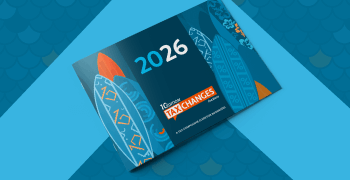The same, but different: Why is one VoIP call communications taxable and the other not?
Even though the phrase may sound clunky and outdated, Voice over Internet Protocol — better known as VoIP — has actually become the de facto way to keep today’s increasingly mobile workforce and distributed family units connected. VoIP services have seen huge growth in recent years as carriers allow customers to call over Wi-Fi, and businesses move to abolish the traditional desk phone. Many companies have introduced their own unique offerings to join this lucrative market that’s predicted to reach $55 billion by 2025.
VoIP may seem relatively simple to define, but there are technical variations that complicate the application of communications tax and regulatory fees that apply to VoIP. This can all lead to huge confusion, and ultimately risk.
A voice service, or not?
While VoIP doesn’t comfortably fit into the traditional telecom voice regulatory guidelines, it clearly provides voice service. This tends to cause consternation for VoIP providers — is sales tax required or is communications tax required? Well, the answer is: It depends. And understanding exactly how your product works is important to ensure you’re adequately prepared.
This debate reached a boiling point in the fall of 2019, when the Supreme Court of the United States refused to hear a case on the regulatory oversight of states for VoIP services (see this blog for more details). The uncertainty around the issue continues and will likely cause more issues for states trying to make these determinations themselves.
But the complexity doesn’t stop there.
The same, but different
Although two companies may offer seemingly similar VoIP services, one could be subject to communications tax while the other is not. The heart of the matter is the definition of “interconnectivity.” Some VoIP services are interconnected while others are not. Understanding exactly what this means for your customers, and what the tax implications are, can have significant impacts on a company’s bottom line.
- Non-interconnected VoIP, sometimes referred to as “peer-to-peer” VoIP, is a service that allows the user to contact other users operating the same VoIP software or app. However, the service does not allow the customer to make and receive calls from the public switched telephone network (landline phones and cell phones). For instance, you cannot dial your cell phone from most common free social apps.
- Interconnected VoIP, on the other hand, generally allows users to make and receive calls from a regular telephone network. This is typical for business applications used to replace desk phones, or services that some carriers are now offering in lieu of mobile or wireline options.
What this difference means
Interconnected VoIP providers are typically required to:
- Comply with Local Number Portability (LNP) rules
- Contribute to the Telecommunications Relay Services Fund (TRS), which is used to help provide communications services to people with speech or hearing disabilities
- Contribute to the Federal Universal Service Fund (FUSF), which supports communications services in high-cost areas and for income-eligible phone subscribers
- Provide 911 functionality and collect government 911 fees
In contrast, non-interconnected VoIP may be subject to less state and local tax. These services are usually not required to contribute to the FUSF. And because they often don’t include 911 functionality, local 911 fees may not apply. That said, significant state and local communications and sales taxes may still be due.
This means that interconnected VoIP services are likely subject to significantly more tax and fees than non-interconnected VoIP services, despite consumer belief that the services are the same. Failing to understand these distinctions and prepare accordingly can put your company at risk for significant penalties and fees. In addition, regulatory and tax compliance requirements are much different for communications tax. Specialized communications tax software and billing platforms are typically required to adequately handle the necessary fields and calculations. Understanding and being prepared is essential to minimizing audit exposure.
Want to learn about managing communications tax compliance for VoIP services? Read our whitepaper Communications Tax Impacts of VoIP Services or contact us directly. We’ll help you sort out the nuances.

Avalara Tax Changes 2026 is here
The 10th edition of our annual report engagingly breaks down key policies related to sales tax, tariffs, and VAT.
Stay up to date
Sign up for our free newsletter and stay up to date with the latest tax news.














